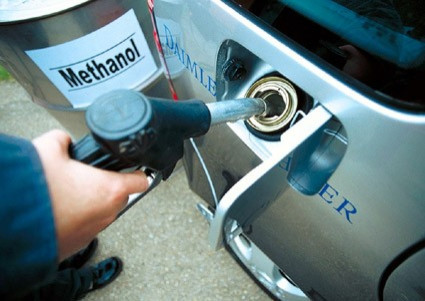US Consumer Price Index Rose 0.4% in Feb. on Surging Gasoline

The cost of living in the U.S. rose to a 10-month high in February on the back of soaring gasoline prices, government data showed Friday.
The consumer price index, or CPI, increased 0.4 percent, its biggest gain since April 2011, the Labor Department said Friday, and matching economists' forecast. Overall inflation was up 2.9 percent year-over-year.
The top-line number is all energy, said Steve Blitz, chief economist at ITG Investment Research.
However, the Federal Reserve's policy-setting Federal Open Market Committee emphasized earlier this week that the surge in energy prices is temporary and that inflation will remain below the Fed's target rate of two percent in 2012.
The gasoline index rose sharply in February, accounting for over 80 percent of the change in the top-line figure. The gasoline increase led to a 3.2 percent rise in the energy index despite a decline in the index for natural gas.
In February, spot prices of West Texas Intermediate and Brent crude oil rose by $9 and $10 per barrel, respectively. Nationwide, the average retail price of regular-grade gasoline increased by about 28 cents per gallon.
The U.S. Energy Information Administration expects the monthly average regular-grade gasoline retail price to peak in May at $3.96 per gallon.
According to the Department of Energy, crude oil accounted for nearly 70 percent of the cost of gasoline in 2010.
The EIA projects that vehicle-fueling costs for the average U.S. household will be about $238 more in 2012 than in 2011.
Blitz said the increase in energy prices this time around isn't due to great oil demand, as Europe and China are slowing down, but more because of concerns regarding Iran's nuclear program and a potential scarcity because of possibility of war.
With Middle East tensions continuing to linger, we suspect energy prices will remain elevated in the coming months and pose a significant downside risk to the economic outlook as firms and consumers grapple with higher petroleum prices, Sam Bullard, a senior economist at Wells Fargo Securities LLC, wrote Thursday in a research note.
The Fed, however, doesn't seem worried.
In its policy statement Tuesday, the FOMC said the recent increase in oil and gasoline prices will push up inflation temporarily. Central bank officials, however, said that following the run up, annual inflation will stay at or below the two percent target.
Food prices were unchanged in February, with the food-at-home index unchanged for the second month in a row as major grocery store food indexes were mixed.
The core CPI index, which excludes volatile food and energy prices, rose 0.1 percent in February and is up 2.2 percent over the year.
The core (gauge) is in the process of creeping higher on a year-over-year basis, Blitz said, adding that inflation always runs with a lag of about a year or so from the general economy.
The cost of shelter increased 0.2 percent for the fifth month in a row, while clothing prices declined in February, falling 0.9 percent after a 0.9 percent gain in the prior month.
New vehicle prices rose for the first time since June, increasing 0.6 percent. Used cars and trucks saw prices drop for the sixth consecutive months, falling 0.2 percent.
Stagnant Wages
U.S. employers hired 227,000 workers in February -- the third straight month more than 200,000 workers found jobs -- and unemployment held at a three-year low of 8.3 percent.
Yet, personal incomes are barely keeping pace with inflation. Real disposable income decreased 0.1 percent in January, according to the most recent data from the Commerce Department. Meanwhile, consumer spending in January, the latest data available, came in flat for a third straight month.
Prices are going up, at the same time, wages are not rising as rapidly, Blitz said. As long as we have this gap, the Fed is not worried (about inflation pressure).
Wages govern how high prices can go because consumers will eventually pull back if the pace of wage increases can't keep up with the increase in prices.
For inflation to go up, you need wages to go up as well, Blitz added.
The Fed is forecasting that the inflation gauge it uses will increase by about 1.6 percent in 2012 and rise to about 1.7 percent in 2013.
Separate reports showed the February producer price index, a measure of wholesale prices, posted its largest gain in five months boosted by higher energy prices, while imported food prices recorded its largest drop in three years.
Quantitative Easing
Observers believe current economic conditions don't warrant a third round of quantitative easing, or QE3. The first two rounds of bond-buying by the Fed took place during 2009-2011.
Fed officials offered few clues about QE3 in their March FOMC meeting statement. The minutes of their meeting, to be released April 3, may provide more insight.
I don't believe the Fed is going to do another round of quantitative easing, Blitz said. What would drive the Fed to do that, if they do it, would be some sort of an economic event that threatens a decline in the equity markets.
© Copyright IBTimes 2024. All rights reserved.





















